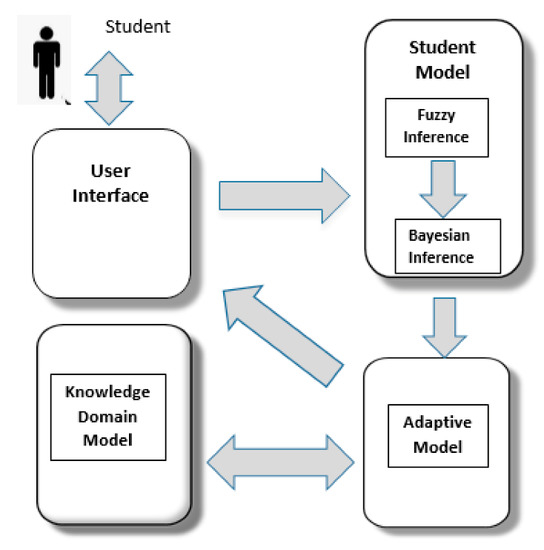The Greatest Guide To Bioinformatics Tutor
Table of ContentsGetting The Bioinformatics Tutor To WorkGetting The Bioinformatics Tutor To WorkOur Bioinformatics Tutor DiariesAbout Bioinformatics TutorBioinformatics Tutor Can Be Fun For Anyone
Of the overall participants involved in the training, 80% were pupils from public college institutions, while the remaining 20% originated from personal institutions. To certify for a certificate of participation, pupils were needed to attend a minimum of 90% of the overall training hours. As an outcome of this demand, an excellent 95% of the participants efficiently obtained their certifications, having not only fulfilled the minimum presence criteria yet likewise finished all appointed activities throughout the training.

Throughout the elevation of the COVID-19 pandemic, specifically in between June and August 2020, the task team was charged with arranging specialized training in bioinformatics. This training was particularly focused on pupils from the research team Nucleus for Research study in Applied Computer at the Federal University of Pará (UFRA) The adaptation to remote discovering platforms due to the pandemic produced a possibility to explore new mentor techniques and digital tools that improved both reach and performance.
This program was designed to supply an available yet thorough summary of Artificial Knowledge techniques, specifically as applied in bioinformatics (Bioinformatics Tutor). This online format allowed engagement from trainees throughout Brazil, many of whom may not have had the possibility to go to in-person sessions.
The 7-Minute Rule for Bioinformatics Tutor
A notable attribute of this training course was its emphasis on hands-on knowing. Around 50% of the overall training hours were devoted to sensible tasks where students developed smart models and applications in a variety of scientific domains, including genes, molecular biology, and ecological data evaluation. Extensively used frameworks and tools such as Spyder, Google Colab, Jupyter Notebooks, and Orange were integrated right into the coursework. These systems enabled pupils to take part in real-time data adjustment, model training, and algorithm trial and error.
Sixty of them were associated with various greater education establishments in the state of Pará, while the staying twenty came from institutions located in 5 various other Brazilian states. By presenting Artificial Knowledge in a practical and relevant context, the initiative served to connect the gap between concept and real-world application, offering students with a strong foundation for future research study or work in the field.
The training effort created component of a wider scholastic outreach effort understood as the Bioinformatics when traveling task. This task has, throughout the years, presented loads of trainees to the world of bioinformatics and computational biology. The events held under this umbrella effort have occurred throughout multiple areas and years, as summarized in Table 1 (Listing of events, locations, years, and overall numbers of students and teachers)
One of one of the most amazing results of the Bioinformatics when driving initiative has actually been its payment to the development of decentralized study teams. Several of these groups, originally brought with each other by their engagement in training occasions, have considering that gone on to create independent scientific research study in collaboration with local scholastic institutions. The training not only fostered clinical reasoning within the context of bioinformatics but additionally triggered collective partnerships that extended past the training atmosphere. These partnerships have actually resulted in enhanced neighborhood scientific productivity you could check here and contributed meaningfully to the advancement of the more comprehensive bioinformatics neighborhood in Brazil.
The Greatest Guide To Bioinformatics Tutor
The project itself was conceived and organized by megabytes and RR, who oversaw the preparation and implementation of each action. Lectures were provided by a multidisciplinary group containing megabytes, FA, EF, KP, JS, DM, SN, LP, LG, AIR CONDITIONING, rr, and ih. The same team, excluding IH and RR, likewise served as tutors for the click to read more sensible training modules. Financing for the project was supplied through the give 88887.200562/ 2018-00 from CAPES. The authors prolong their thankfulness to everyone who contributed to the understanding of this project, whether straight or indirectly, considering that its beginning.
The Federal College of Pará's Workplace of Research (PROPESP/UFPA) also supplied economic support, specifically for the manufacturing of the last manuscript. The writers declare no commercial or monetary problems of interest that might have influenced the research study. All viewpoints and interpretations revealed in this write-up are solely those of the authors and do not necessarily reflect those of their respective institutions, the publisher, editors, or reviewers included in the publication process.

What Does Bioinformatics Tutor Mean?
From a pedagogical perspective, the training technique utilized in the training was intentionally interactive. Classes were performed in a way that encouraged student engagement and conversation, exceeding memorizing memorization to discover exactly how ideas are created, used in life, and tested in scholastic settings. The instructional ideology concentrated on nurturing both solid and having a hard time students, supplying personalized support, and structure confidence via sustained mentorship and patience.

Each group, including approximately 36 individuals, was supported by three advisors-- a lot of whom were postdoctoral researchers with customized expertise. These advisors not only helped make the group projects yet likewise promoted their implementation, guaranteeing that each study concern was both relevant and suitably challenging. The objective was to supply a biologically sensible context that participants can check out via open-ended purposes and access to curated datasets.
For added insights right into the methodology and end results of this project-based discovering approach, visitors are directed to S1 Text, that includes detailed summaries of the instructional framework, analysis techniques, and task themes utilized in the training sessions.
Some Ideas on Bioinformatics Tutor You Need To Know
Of the total amount individuals involved in the training, 80% were trainees from public greater education organizations, while the staying 20% came from private institutions. To qualify for a certificate of involvement, students were called for to go to at the very least 90% of the complete training hours. Significantly, beyond the pupils that registered in the training sessions, seven knowledgeable instructors took part in providing the programs, while 3 dedicated research professors worked with the general training process. Around 50% of the overall training hours were devoted to functional activities where students developed intelligent models and applications in a range of clinical domain names, consisting of genes, molecular biology, and ecological data analysis. The training not only cultivated clinical reasoning within the context of bioinformatics however likewise sparked collaborative relationships that expanded past the training setting.
Comments on “The Ultimate Guide To Bioinformatics Tutor”